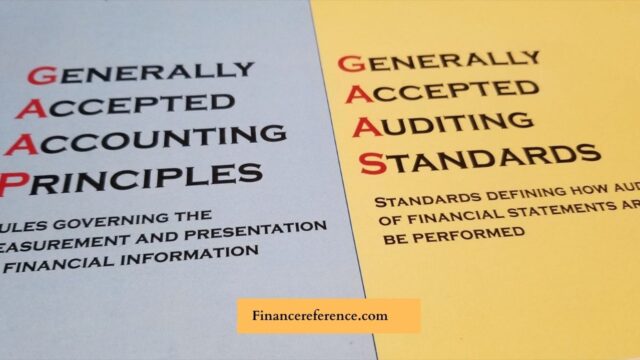
What is the difference between GAAP and GAAS? Essentially, they are two standards used by certified public accountants in preparing financial statements and perform other accounting related tasks. In addition, auditors use GAAP to verify that recorded transactions have been properly recorded. After the auditor’s approval, financial statements are typically provided to third parties. For more information about GAAP and GAAS, read on! Here are some of the main differences between Gaas.
Additional Reading:
What is GAAP?
GAAP, or Generally Accepted Accounting Principles, is a set of accounting standards that are used to prepare and present financial statements for public and private companies in the United States. The Financial Accounting Standards Board (FASB) is the organization responsible for creating and updating GAAP, which includes a set of rules, guidelines, and best practices that companies must follow to ensure that their financial statements are accurate and consistent.
The purpose of GAAP is to provide a common set of standards that can be used to compare the financial performance of different companies. By following GAAP, companies can ensure that their financial statements are transparent, reliable, and consistent, which is essential for investors, lenders, and other stakeholders who rely on financial statements to make informed decisions.
GAAP covers a wide range of topics, including revenue recognition, inventory valuation, depreciation, and financial statement presentation. Companies that follow GAAP must adhere to specific rules and guidelines for each of these areas to ensure that their financial statements are accurate and complete.
What is GAAS?
GAAS, or Generally Accepted Auditing Standards, is a set of auditing standards that are used by auditors to assess the accuracy and reliability of a company’s financial statements. GAAS is governed by the Public Company Accounting Oversight Board (PCAOB), which was established in 2002 in response to accounting scandals such as Enron and WorldCom.
The purpose of GAAS is to ensure that auditors have a consistent and reliable set of standards to follow when conducting audits. GAAS sets out the requirements for auditors in areas such as planning, evidence gathering, and reporting. By following GAAS, auditors can provide an independent assessment of a company’s financial statements that is trustworthy and unbiased.
GAAS consists of three separate standards: general standards, standards of fieldwork, and standards of reporting. General standards relate to the qualifications of the auditor and their independence from the company being audited. Standards of fieldwork relate to the procedures that auditors must follow when conducting an audit, such as testing internal controls and gathering evidence. Standards of reporting relate to the auditor’s responsibility to communicate their findings to the company’s management and external stakeholders.
Key Differences Between GAAS vs GAAAP
While GAAP and GAAS both relate to financial reporting and auditing, there are some key differences between the two sets of standards. Here are some of the main differences:
Purpose: The primary purpose of GAAP is to ensure that financial statements are accurate and consistent, while the primary purpose of GAAS is to ensure that auditors can provide a reliable and independent assessment of a company’s financial statements.
Scope: GAAP covers the preparation and presentation of financial statements, while GAAS covers the audit of financial statements. While there is some overlap between the two sets of standards, they focus on different aspects of financial reporting.
Authority: GAAP is governed by the Financial Accounting Standards Board (FASB), while GAAS is governed by the Public Company Accounting Oversight Board (PCAOB). The FASB is a private organization, while the PCAOB is a public organization established by the Sarbanes-Oxley Act of 2002.
Applicability: GAAP applies to all companies that prepare and present financial statements, while GAAS applies to auditors who audit those financial statements. While all publicly traded companies are required to have their financial statements audited by a PCAOB-registered auditor, private companies may not necessarily have to follow GAAS if they are not subject to audit requirements.
Standards: GAAP consists of a broad range of accounting principles and rules, while GAAS is focused on specific auditing standards. GAAP covers topics such as revenue recognition, inventory valuation, and financial statement presentation, while GAAS covers areas such as planning, evidence gathering, and reporting.
Compliance: Companies must comply with GAAP to ensure that their financial statements are accurate and consistent. Auditors, on the other hand, must comply with GAAS to ensure that their audits are conducted in accordance with professional standards.
In summary, GAAP and GAAS are both important sets of standards that are used in financial reporting and auditing in the United States. While they share some similarities, they have different purposes, scopes, and requirements.
Companies must follow GAAP to ensure that their financial statements are accurate and transparent, while auditors must follow GAAS to ensure that their audits are reliable and independent. Understanding the differences between these two sets of standards is essential for anyone involved in financial reporting or auditing, including investors, lenders, and accounting professionals.


































